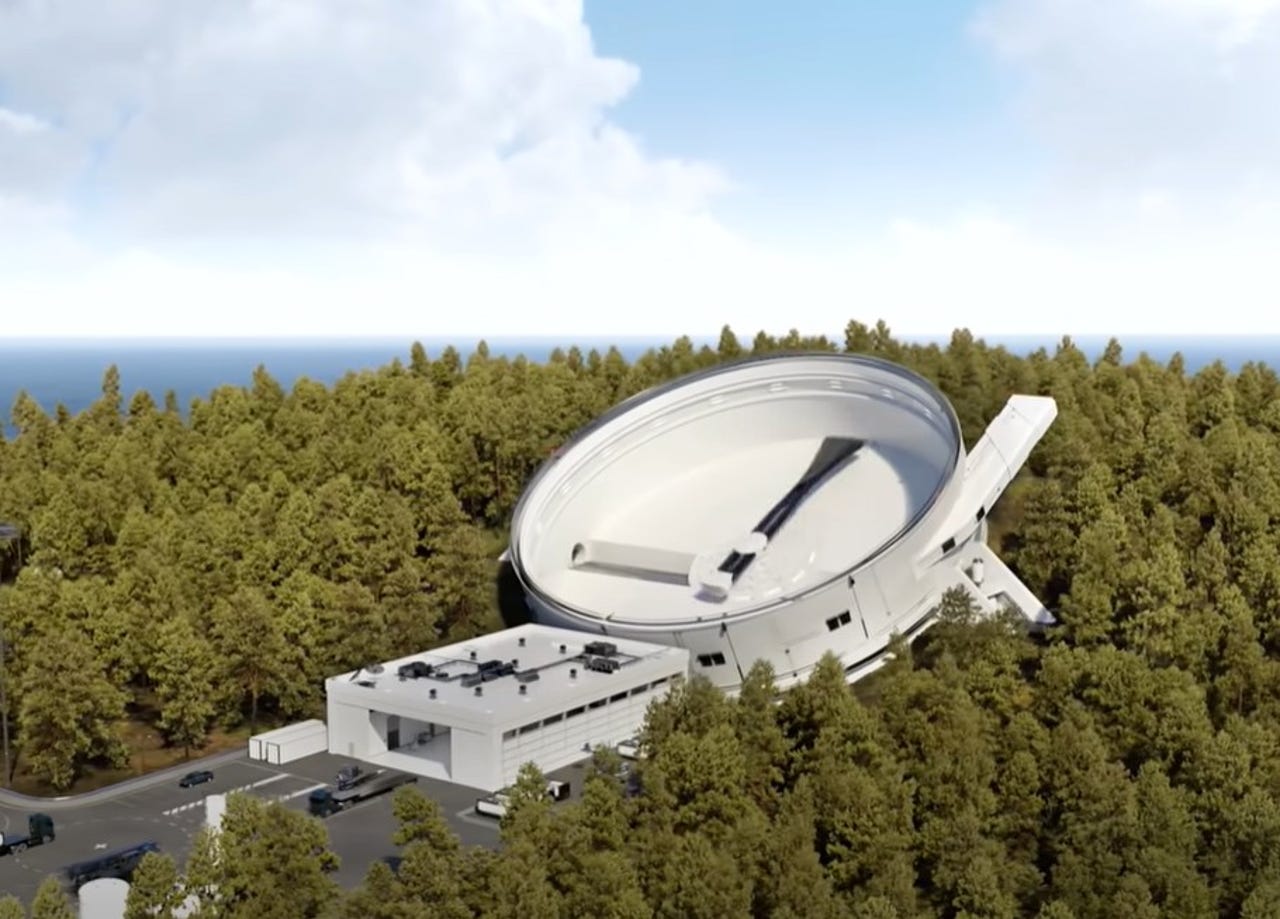NASA will test this 'SpinLaunch' system that hurls satellites into space


NASA has agreed to test startup SpinLaunch's kinetic launcher, a giant circular accelerator that aims to shoot 200 kilogram satellites into space.
The California-based SpinLaunch's launcher is located at the Spaceport America facility in New Mexico where it will carry out a test flight with NASA later this year, according to the firm.
Space
Backed by Airbus Ventures, Google Ventures and Kleiner Perkins, the company plans to launch its first orbital payloads in 2025, but in October it tested its suboribtal accelerator, achieving speeds for the payload of over 1,000 miles per hour (1,609 kilometers per hour).
SEE: How to talk about tech: Five ways to get people interested in your new project
The suborbital accelerator is a 108 foot (33 meter) diameter steel vacuum with an internal, electrically driven spinning arm that ejects the payload through a chute, directed at space. The much larger orbital accelerator is 308 foot (100 meters) in diameter and is projected to launch a vehicle holding a payload, like a satellite, at speeds of up to 5,000 miles per hour (8,000 kilometers per hour).
SpinLaunch's signing of a Space Act Agreement with NASA moves it a step closer to commercializing a service that seems simple, but also requires a lot of complex engineering and materials.
The appeal to NASA could be that the suborbital and orbital accelerators can, if they work, cut out 70% of the fuel and structures of a typical rocket launcher.
The company argues that the appetite for satellites in Low Earth Orbit, such as Elon Musk's Starlink satellite constellation for broadband, will create demand for a less-polluting launcher option than rockets. All of Starlink's roughly 2,000 satellites were launched on SpaceX rockets.
The system requires some additional propulsion, though. After reaching the stratosphere, the payload relies on a vehicle to hit the speeds and direction needed to reach its target in orbit.
SpinLaunch plans to shoot the first NASA payload later this year as part of a test flight and also plans to recover the payload.
The company is also developing its small 20 kilogram and 200 kilogram satellites that are compatible with its launchers.
"What started as an innovative idea to make space more accessible has materialized into a technically mature and game-changing approach to launch," said Jonathan Yaney, founder and CEO of SpinLaunch.